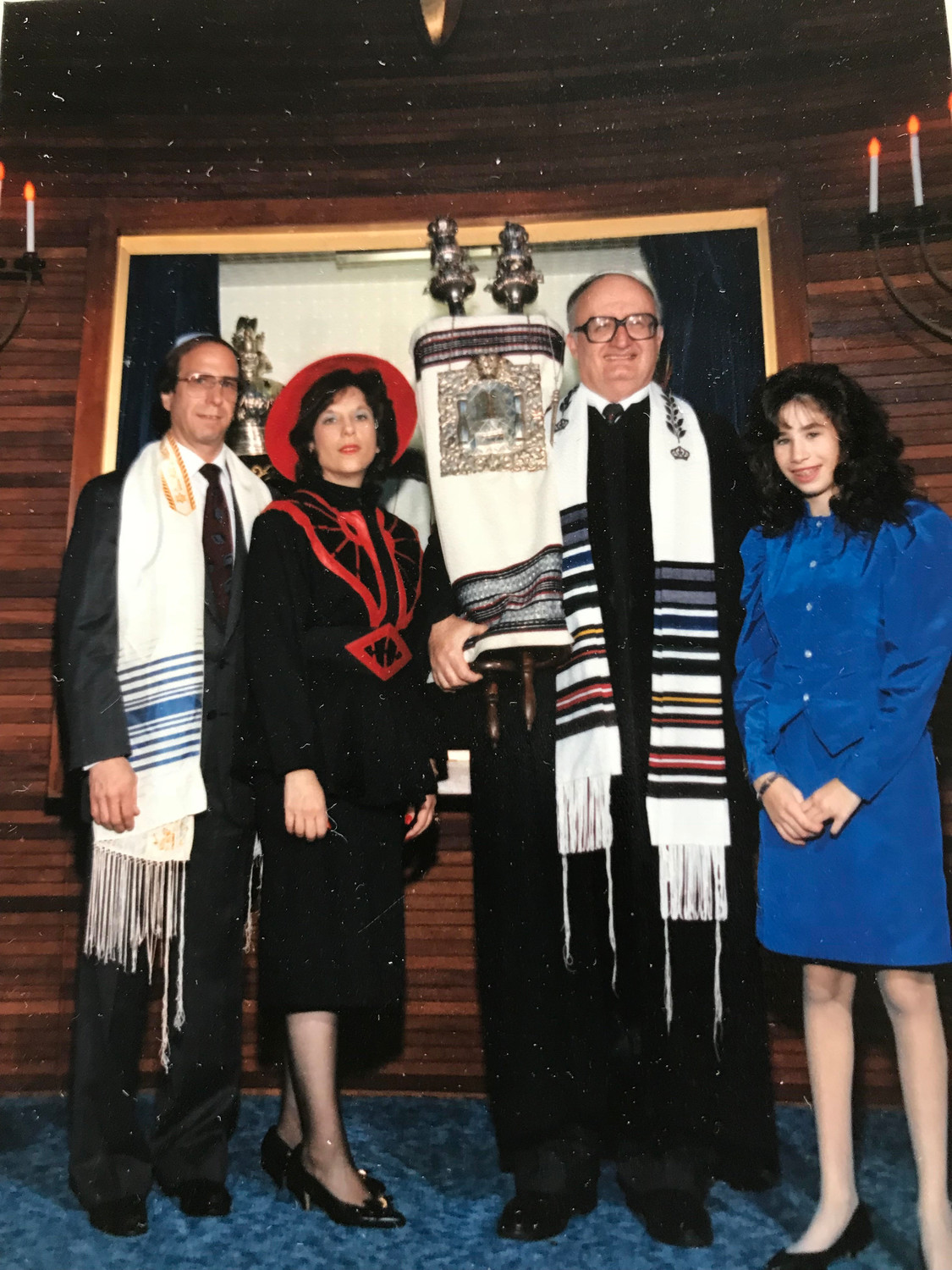A marriage of ideas
Temple Emanu-El to merge with Temple B'Nai Torah this summer
Sitting inside the dome-like synagogue at Temple Emanu-El, you are meant to feel “in the middle” and “included at all times,” Jeff Kraut, a historian and congregant of the East Meadow temple, explained.
The circular design heightens the perception, Kraut said at an April 28 farewell ceremony as the synagogue prepared to merge with Temple B’Nai Torah of Wantagh. Guests shared 65 years of memories of their congregation.
Lisa Shubin said that as a child, she would gaze at the ceiling, which she likened to a sandy beach in color and texture, and drift into a state of tranquillity as she chanted Shabbat prayers. She said that her daughter recently nudged her during a service, pointed skyward and shouted, “‘Mom, there’s a beach up there.’”
Andrea Conwell recalled watching her father, Murray Garvin, play the lead in a number of shows in the temple’s theater program, starting with “Guys and Dolls” in 1958. Garvin died in 1969, and now Conwell continues his legacy, she said, having played the character Golde in the congregation’s 2003 and 2018 productions of “Fiddler on the Roof.”
Alisa Baroukh recalled taking a leap at her bat mitzvah by reading the closing six paragraphs of the Haftarah blessing, which is often recited by a rabbi or a more experienced congregant. This year, Baroukh’s daughter Addison will be the congregation’s last bat mitzvah, she said, and will read those same six paragraphs.
While thoughts of the upcoming move drew tears from some of congregants, Shubin said, “Such heartbreak could only come from having loved something so much.”
Much has changed since the temple’s heyday. According to Rabbi Daniel Bar-Nahum, the congregation once celebrated 100 bar mitzvahs a year, but that number has dwindled to roughly 20. Its consecration class of 1997 consisted of almost 50 children, but there were only five in the class of 2015.
Bar-Nahum attributed the decline in membership to a cultural shift in how the millennial generation — those born between the early 1980s and mid-1990s — approaches religion. He believes that many are still religious, he said, but do not belong to congregations. At the new Temple B’Nai Torah, Bar-Nahum added, “We will focus our attention on how to engage the younger generation.”
This pattern is not exclusive to East Meadow: In 2008, Temple Judea, in Massapequa, merged with the Suburban Temple of Wantagh to become Temple B’Nai Torah. Les Kule, of Wantagh, said he bade farewell to Temple Judea.
“Having been a part of that [transition], I know what that feels like,” Kule said. “And it’s heart-wrenching.”
A decade later, Kule, now Temple B’Nai Torah’s president, empathizes with Emanu-El congregants, who will walk their scrolls about four miles southeast to their new home in Wantagh on June 10.
Kule explained that another reason for the merger was that Temple Emanu-El’s facilities were in constant need of repair. Bar-Nahum agreed, saying, “The building condition forced us to make a decision.”
The administration at Temple Emanu-El has already sold the structure and is uncertain what will happen to it next, Bar-Nahum said. He declined to offer any other details.
Temple Emanu-El President Lane Rubin and his executive board voted to merge with B’Nai Torah last spring. Immediately afterward, he and Kule began discussions with advisory councils and subcommittees in the interest of compromising on the temple’s differences in such areas as religious education and worship rituals. The merger’s details are still being finalized, and several committees will present their plans over the next two months.
In its inaugural year, Rabbi Howard Nacht of Temple B’Nai Torah will co-head the new temple with Bar-Nahum. The two have already begun leading Shabbat services together, and Nacht said he is ready for a year of transitions and experimentation.
“It’s like any two organizations or any two people — it’s like a marriage,” Nacht said. “Like any good marriage, it’s all about respecting each other and compromising.”
Bar-Nahum agreed, noting that Reform congregations often pride themselves on individualism. Two congregants, he said, may have completely different understandings of a Jewish text. And those variations, like a mosaic or stained-glass window, help create a united Reform congregation.

 50.0°,
Overcast
50.0°,
Overcast 





